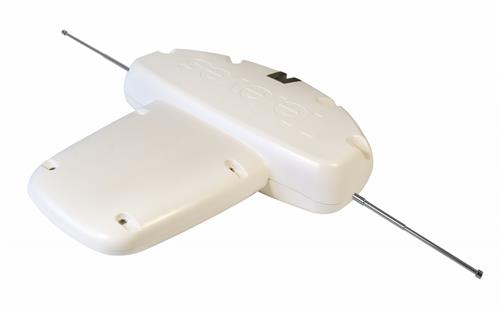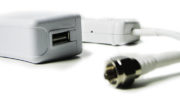YES
If you’re considering an antenna like our Televes DiNova Boss Mix, you have a lot to feel good about. It’s solidly built, a great performer, and has advanced features like LTE filtering to keep stray signals out that might cause interference. But don’t think that because you see a lot of plastic that you can skip the grounding phase.
Why ground an antenna?
Grounding an antenna discourages static electricity buildup around the antenna. This makes it less likely that a lightning strike will occur. In the event of a lightning strike, proper grounding means that as much electricity as possible will pass harmlessly away from your house.
I’ve often called grounding “the most important thing you never do” because it’s so rare that people take this extra step. It’s true that the grounding wire costs money, and that the entire thing takes time to do. But it’s worth it… because grounding can help prevent catastrophes. It’s too late to ground the antenna when you see the lightning storm on the way. You have to do it well in advance, and that takes a little extra effort.
But a plastic antenna?
The antenna is mostly plastic on the outside, but there’s still metal on the inside. The entire idea of the plastic radome is that it’s transparent to the weak signals used by television. It’s most certainly not going to block a massive lightning strike. So please, please don’t skip the grounding part.
Televes’ own documentation for its “radomized antennas” calls for grounding both the antenna and the ground wire in a case like this. Yes, it’s true that I posted an article that said I don’t generally ground the mast, and laid out the reasoning behind it. But if the manufacturer goes to the trouble of saying you ought to ground the mast, well I’m going to ground the mast. And I’ll suggest that you do too. After all, it doesn’t hurt to have that extra level of protection.
When grounding the mast and the antenna, both should be grounded using approved ground wire. This is a simple step and will save you a lot of heartache later on in the case of an electrical storm. The ground wire can often be attached to a cold water pipe or whole house ground. If you don’t have access to either, you may be able to use a grounding rod. It all depends on your local ordinances.
If you’re not sure what kind of grounding connections you should use, the best thing to do is check with your local city hall or a licensed electrical contractor in your area. No matter what, grounding should be part of the process of putting up every single antenna, even plastic-covered ones.
Get the grounding supplies you need from Solid Signal
Whether you’re looking for simple grounding supplies or the most complex installation equipment, you’ll find everything you need when you shop the great selection at Solid Signal. We can help you make your digital life the best it can be!





